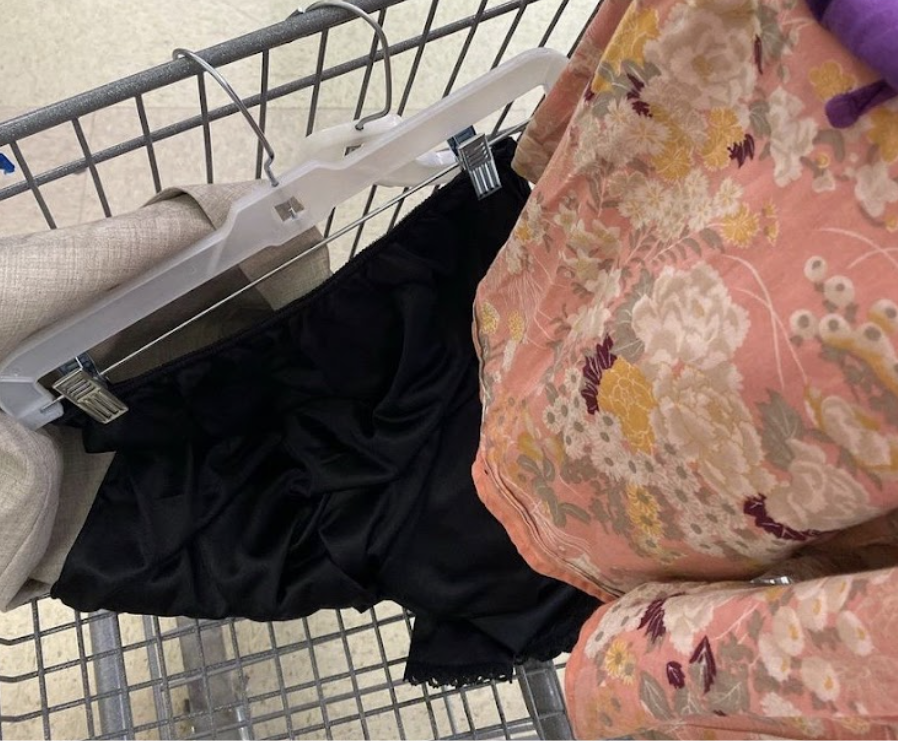The past few years have popularized thrift shopping (“thrifting”) in Gen Z practically overnight. Though buying secondhand clothes was once looked down upon, now it’s considered cool.
Social media has brought the environmental impact of fast fashion to the spotlight. Globally, the fashion industry produces 92 million metric tonnes (1 metric tonne is 2,204 pounds) of textile waste every year. Due to the constant cycle of trends that fast fashion brands create, most people in the US will wear an article of clothing less than ten times before throwing it out.
With the cost of environmental consequences in mind and the resurgence of Y2K and other vintage styles in mainstream fashion, people are looking for alternative ways to be stylish while helping the planet. Although thrifting offers an exciting substitute for shopping for new clothes, it can be hard to know where, when and how to start. The following tips are a guide to make you a pro thrifter
Decide where you’re going to thrift.
If you want to thrift but don’t know where to start, start by thinking of what kind of clothes you want to buy and how much you want to spend. Thrift stores usually have contemporary clothing for low prices, while vintage stores offer a curated selection of clothing that’s usually more expensive and specific to the era or style the store advertises.
Flea markets and estate sales are a great place to find a little bit of everything. In flea markets, vendors sell different types of clothing, furniture, decor and handmade crafts, while at estate sales, owners put up good sales on otherwise expensive items.
Fashion YouTuber bestdressed recommends keeping a “thrift store diary” where you record places you’ve shopped at, what you found, prices and which sections were especially good or bad to help you decide where to thrift in the future.
Decide when to go.
Weekday afternoons are the calmest days to thrift. Although it’s tempting, try to avoid the weekend rush.
If you are committed to finding a specific piece, or want to get the best experience possible, find out what days of the week your local thrift store restocks and go on those days. There will be a wider selection of clothing and trending items won’t have been bought yet.
Go in with a strategy.
Make sure you know what you are looking for beforehand. Make a list and bring it with you so you don’t get overwhelmed by all the options once in the store. Bringing a list will keep you from getting distracted and getting things you won’t actually wear.
For example, if you are looking for oversized T-shirts, go straight to the men’s section. If you are looking for crop tops, try the children’s section before going to women’s.
Search by material.
Once in the store, look for good quality materials like silk, cashmere, velvet, corduroy, lace, denim and cotton. Avoid polyester and acrylic knits. These materials don’t age well and won’t last for a long time.
Although thrifting brands like H&M, Forever 21 and Shein is better than if you were to buy them new, avoid fast fashion brands famous for their bad quality clothing altogether.
Always check whether what you are buying needs to be dry cleaned before paying for it. Dry cleaning can cost double or triple what you paid for the piece of clothing!
Take your time!
Be patient and don’t just grab the first thing you sort-of-like off of a rack. Take your time flipping through pieces of clothing: the best finds are usually hidden beneath piles of other clothes.
Bring a friend.
Thrifting with a friend or with your family is a great way to spend an afternoon, and you can help each other by finding cute pieces of clothing for each other and making sure you don’t miss any good finds.
Get creative with the sections.
Make sure to check every section, even if you think it won’t have what you are looking for. For example, to find silk camis, check the pajama and lingerie sections instead of searching the women’s tops for hours.
Dress for success.
Many thrift stores don’t have dressing rooms or have a long line to use them. To maximize your time, wear leggings and a tight T-shirt or tank top so you can try things on top quickly and efficiently.
Remember online thrifting exists!
If there aren’t many thrift stores near your house, or you are an online shopping person, thrifting can still be for you! Sites like ThredUp, an online thrift store, have millions of pieces to browse from. Depop and Poshmark are online marketplaces where vendors can sell directly to their customers. To find what you’re looking for on online thrifting sites like these, use the filters to narrow down the thousands of options by brand, color, material, size, fit and more.
Be a mindful and respectful thrifter.
Although it can be tempting to buy bigger sizes of clothing to tailor or wear oversized, if you generally have an easy time finding clothes your size, leave those finds on the shelf or rack for people who can’t comfortably size up or down.
If you have the resources to buy new or are planning to resell online, don’t buy in bulk to resell at a much higher price.
And if you see a piece of clothing on the ground or in the wrong place, do the store’s staff a favor and put it back in its place. They’ll appreciate it!
By Sofía Vakis

































































